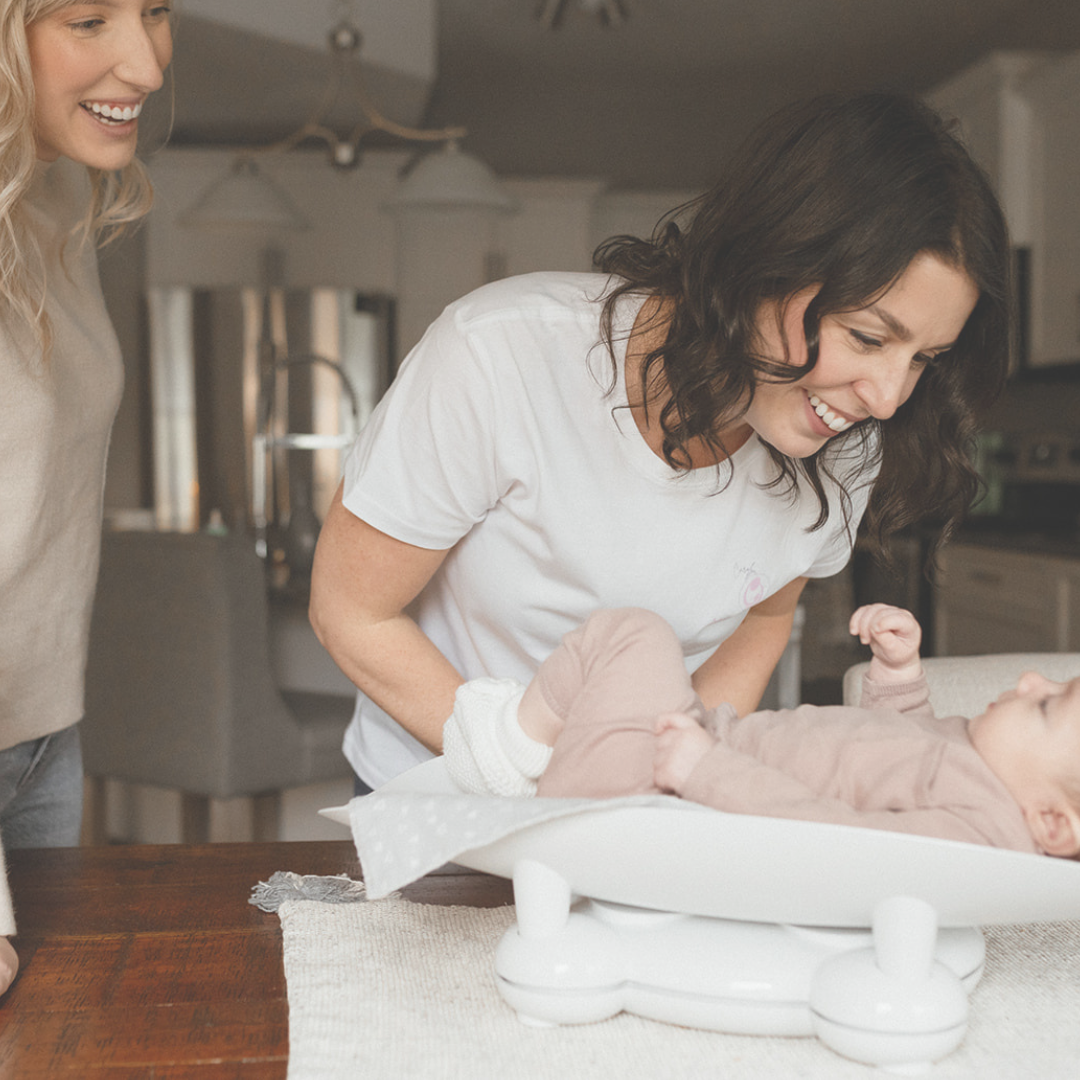After potentially hours of labour with your little one or a major abdominal surgery if you have an operative birth (or sometimes both!), YES we want you to breastfeed your baby in that first hour after they are born. How exciting, and how terrifying at the same time. Now something to remember, and to keep in the back of your mind is that most women will produce enough breast milk for their baby to thrive and grow. We also want to remember that exclusively breastfeeding your baby, even at this very early stage, is sufficient to meet the needs of your baby’s body needs for most healthy term babies.

Now how can we best accomplish this seemingly gigantic task of initiating breastfeeding with your little one? The best thing you can do after you give birth to your baby is get your baby skin-to-skin with you. That means taking off your shirt or gown, and bringing your baby naked (or dressed in a diaper if you prefer) to your chest for at least an hour uninterrupted. This is a critical time for you and your baby to bond, and your bodies naturally crave this time together to help you both recover from birth.
Depending on your healthcare provider choice and where you are delivering your baby – hospital, home or birthing suite – you want to find out what the policies are ahead of time on when the first breastfeed is attempted and what the policy is for skin-to-skin contact. Not all hospitals allow for skin to skin contact immediately after birth after a c-section – but many do after a vaginal birth. Having this sort of preparation in your pregnancy can really help you plan with your healthcare provider how you can achieve your goal of breastfeeding your baby after birth.
There has been a lot of scientific research that has proven that skin-to-skin immediately after birth improves rates of breastfeeding in hospitals, and how long women breastfeed in the postpartum period. This time is often referred to as the “golden hour” after birth. There are many positive outcomes for mamas and babies the longer we have skin-to-skin contact after birth. Many of these benefits also happen to help with breastfeeding. Your baby’s breathing, sugar levels, oxygen levels, heart rate and even temperature are stabilized by this contact. The same goes for mamas. This in turn helps you breastfeed for the first time successfully.

So how does this all happen? We know that naturally, when a baby is placed skin-to-skin with their mother that mama’s oxytocin levels naturally rise. This has a number of benefits for mama’s recovery, but specifically it also helps mama’s nipples become more erect so that it is easier for the baby to latch on.
So what steps can we do to help this first breastfeeding session be successful? There are actually nine instinctive behaviours newborns show after birth that lead to successful breastfeeding. Let’s discuss some of them below.
- Take a deep breath, yes this is a natural biological process, but it is a new skill for both you and your baby. You will learn together how to do it.
- Follow your baby’s cues, they’re ready when they look alert, and may look like their head is bobbing up and down, putting their hands in their mouth, or crawling down your chest
- Wash your hands (try to limit any strong smells). Try to eliminate artificial nails if you can before birth.
- Keep amniotic fluid on your baby’s hands – this helps baby find your breast
- Try not to position your hand over the back of your baby’s head – support their neck and shoulders. Babies will push back on your hand if you cover the back of their head.
- Recline back while still sitting upright, and have lots of pillows supporting your baby, your arms and your legs.
- Make a breast sandwich so the baby can latch onto a ledge instead of a round breast (think of how you eat a sandwich – you squish it between your hands before taking a big bite!)
- Allow baby to touch your lick your nipple, touch or massage your breasts or nuzzle you
- Line up baby so they are tummy-to-tummy with you and their nose is equal to your nipple
- Bring baby boldly to your breast
That’s it! You are enough mama, and don’t let anyone tell you any different.
If you want to learn more about how to breastfeed – there is scientific evidence that has proven women who attend education sessions by healthcare professionals on breastfeeding are more likely to be successful breastfeeders. Check out my monthly prenatal breastfeeding class on my group class schedule!



